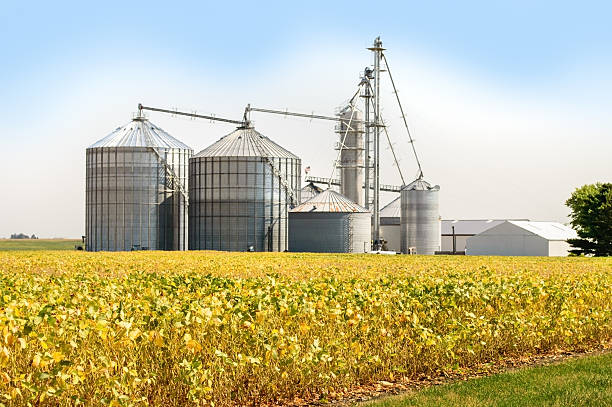In the world of agriculture, steel buildings have long been associated with traditional barns and storage sheds. However, as technology advances and industries evolve, the uses for steel agricultural buildings have expanded far beyond their conventional roles. This article tells you the innovative and unexpected applications of a steel agricultural building, showcasing its adaptability and versatility.
Agricultural Workshops: Where Innovation Meets Farming
Steel agricultural structures are increasingly being transformed into modern workshops. These spacious, well-ventilated structures provide the perfect environment for farmers and agricultural professionals to innovate, repair machinery, and engage in research and development. With ample space and durability, these buildings have become hubs of agricultural progress.
Farm-to-Table Restaurants: Culinary Delights Amidst Crops
Imagine enjoying a farm-to-table dining experience right in the heart of a thriving agricultural field. Steel agricultural facilities are now being converted into charming farm-to-table restaurants. Their rustic yet modern design blends seamlessly with the surrounding landscape, offering a unique ambiance for patrons while supporting local farmers and sustainable food practices.
Indoor Aquaculture Facilities: Nurturing Seafood Sustainability
With the growing demand for seafood, innovative solutions are needed to meet these needs sustainably. Steel agricultural structures are being repurposed into indoor aquaculture facilities. These structures provide controlled environments for fish and seafood production, reducing the environmental impact while ensuring a consistent and high-quality seafood supply.
Vertical Farming Centers: Reimagining Agriculture in Urban Spaces
In densely populated urban areas, space for traditional farming is limited. Enter vertical farming, a revolutionary concept that utilizes steel agricultural structures to stack multiple layers of crops. These buildings house hydroponic and aeroponic systems, enabling year-round fresh vegetables and herbs production in urban environments.
Wineries and Vineyards: Aging Wine with Elegance
Agricultural facilities made of steel have found a new role in the world of winemaking. Wineries and vineyards are utilizing these structures as aging cellars thanks to their climate-controlled interiors and excellent insulation properties. The result is premium wine production with a touch of architectural elegance.
Equestrian Centers: The Perfect Home for Horses
For horse enthusiasts, steel agricultural structures have become the go-to choice for equestrian centers. These spacious structures offer ample room for stables, riding arenas, and equipment storage, ensuring the comfort and well-being of both horses and riders.
Agricultural Tourism: Educational and Recreational Attractions
Agricultural tourism is gaining popularity, and steel agricultural facilities are central to this trend. Farms are repurposing these structures into visitor centers, showcasing the farming process, offering educational programs, and even hosting weddings and other events. It’s a unique way for farms to diversify their income while educating the public about agriculture.
Aviation Hangars: Taking Off from the Farm
Agricultural facilities manufactured of steel serve as aviation hangars in rural areas, where space is abundant. Farmers with a passion for flying can conveniently store their aircraft on their property, blurring the lines between agricultural and recreational pursuits.
Agricultural Storage and Distribution Centers: Keeping Food Fresh
With the global focus on food security, agricultural facilities made of steel are playing a crucial role in food storage and distribution. These buildings ensure that harvested crops are stored optimally, extending their shelf life and reducing food waste.In conclusion, a steel agricultural building has transcended its traditional role as barn and storage sheds. Their adaptability and durability make them perfect candidates for various innovative applications across diverse industries. From fine dining in a farm-to-table restaurant to producing sustainable seafood indoors, these structures are shaping the future of agriculture and beyond.








